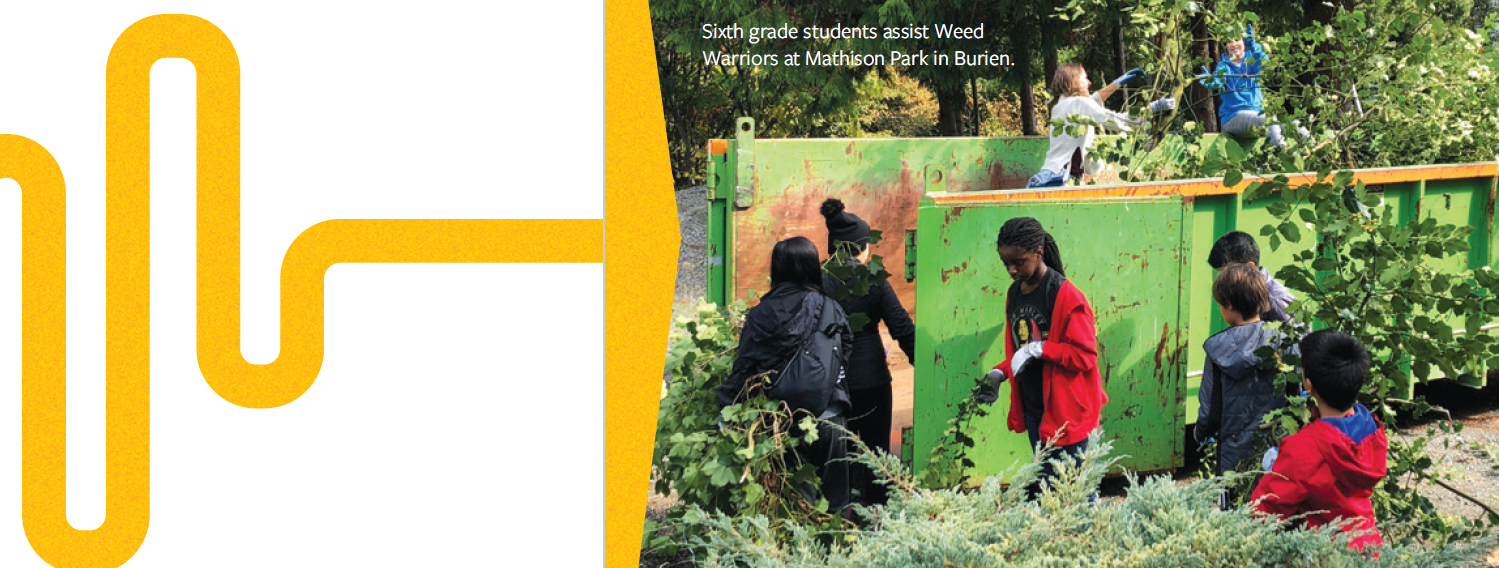
Purposefully Designed Experiences
By Paul Hagen, Dean of Students
HUMANS ARE HARDWIRED FOR LEARNING. We are curious creatures and our inquisitive minds never stop questioning. We long to test ideas, try new things, and gather understanding. It stands to reason, then, that schools should be dynamic places with no doldrums—places where students are continually engaged, never bored, and always eager to learn new facts, share new ideas, and try out new skills. That, of course, is not the experience for students in most schools and part of the reason is because classrooms can be relatively restrictive spaces. In traditional classrooms, students spend precisely prescribed lengths of time in specific rooms completing rigidly defined tasks. At Eastside Prep we have worked hard to create educational environments that are intentionally designed for the best possible learning. These environments, as demonstrated nicely in the newly-constructed TALI Hall, are clearly less restrictive than their more traditional counterparts at schools all across the country, where desks are neatly lined up in rows facing the front of the room and where teachers rarely deviate from content-laden lectures. EPS classrooms are designed for maximum flexibility, with collapsing whiteboard walls, movable furniture, and abundantly available technology. Nothing, however, does more to improve classroom environments than passionate teachers who are committed to partnering with their students and who are dedicated to developing integrated, hands-on, multimodal lessons. Eastside Prep teachers do just that. They are eager to explore diverse teaching techniques to maximize understanding for the varied set of learners that occupy their classes, and they work tirelessly to cut the bonds of traditional educational pedagogy in each class. Beyond this, our teachers are also deeply committed to creating distinct class experiences each day that are engaging, interesting, and deeply educational.
Nevertheless, despite our greatest efforts, there are certain types of learning that simply cannot happen in a classroom. There are times when we must break out of class altogether in order to engage in the sort of learning that can only happen beyond the classroom. With this in mind and with the lengthened fall trimester this year we recognized an opportunity to get out of the classroom and into the wider world. Grade-level teams comprised of advisors and faculty members worked to design three all-day educational experiences for students that would take them beyond the four walls of their classrooms, out of their comfort zones, and into deeper learning. It is not easy to send 460 students and nearly eighty faculty members off campus for a day, but the rewards for such efforts are abundant. These three Education Beyond the Classroom (EBC) Days gave students the chance to explore, discover, engage, and learn in ways not readily possible inside a classroom. We learn by doing, and these EBC Days provided unique opportunities for students to do school.

Seventh grade students assist King County Conservation District at a local farm in North Bend.
One of the greatest benefits of taking students off campus is that they get to visit new places, meet new people, and try new things in a way that isn’t possible on campus. The fifth graders, for example, spent an entire day at the Pacific Science Center, where they made intentional connections with both their history and science classes. Our eighth graders, meanwhile, participated in a “Mission to Mars” at the Museum of Flight that augmented the work they were doing in science class. The freshmen and the juniors spent time in downtown Seattle experiencing different aspects of the urban environment. They participated in a place-based educational scavenger hunt that allowed them to get to know their city and the people in it better. The sophomores spent a day visiting the Seattle Public Library and the University of Washington Research Library, where they spoke with librarians, learned more about the resources available to them at such institutions, and worked to develop the skills that will be so invaluable to them as they pursue future research projects. The seventh graders stepped back in time with a tour of the Seattle Underground and a visit to the Museum of History and Industry. They learned about the history and early development of the city of Seattle where the content of their history class was brought to life in a tangible way.
Another notable advantage of having a day away from regular class is that it provides uninterrupted time for students to pursue projects that would otherwise not be possible or would be restrained by the daily schedule. To this end, seniors benefited from a College Counseling work party on campus, which allowed them the time and headspace to focus intently on the task of applying to college. Both the seniors and sophomores were introduced to their upcoming grade-level projects. The sophomores began work on Capstone Projects and the seniors tackled their Better World Projects. Our Middle School students also had opportunities to take on important projects that would otherwise be too large to squeeze into the regular schedule. The sixth graders spent an entire day working together on a variety of exciting activities designed to teach them new skills and to work on teambuilding. There were introductions to the Maker Space, chocolate making (in support of the Middle School production of Charlie and the Chocolate Factory), improv seminars, and a campus-wide photo scavenger hunt. Likewise, our newest students in the fifth grade had a day of onboarding activities and projects designed to give them the tools necessary to succeed at EPS.
Finally, these days gave our students the chance to serve the wider community. Taking a break from classes allowed students to focus on others and to consider the needs of the world outside of EPS. Students were introduced to the issues and needs facing their community, considered possible solutions to those issues, and then rolled up their sleeves and worked for the betterment of the community. Middle School students served at Northwest Harvest, Mountains to Sound, and HopeLink, while Upper School students spent time at the Pike Place Food Bank, Wellspring Family Services, and Friends of Youth. Some of the most memorable moments and some of the deepest learning came when students stretched themselves beyond their own comfort zones and served others in the community. Students and faculty alike were inspired by the work and thankful for the time to engage in meaningful service to others.
When we move beyond the four walls of our classrooms, explore the wider world, ask big questions, meet new people, and visit interesting places, we gain new perspectives and new understanding. When we take educational risks—try new things, invest time in larger projects—we learn. When the trappings of education are stripped away—when there are no classrooms, desks, or tests—the innate urge to question, to understand, and to learn remains. When we put purposeful effort into the design of educational experiences beyond the classroom, we reap a harvest of newfound interests, renewed enthusiasm, and deep learning.

